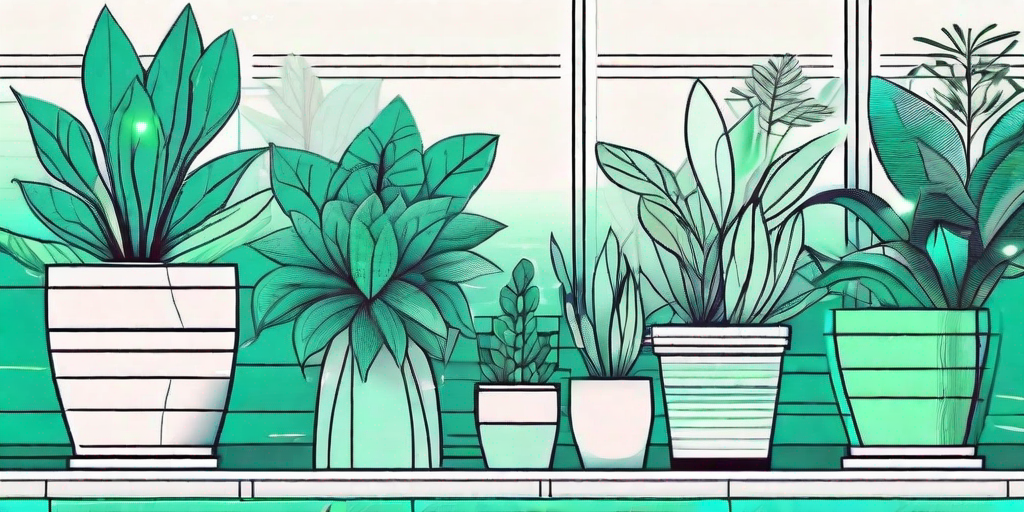
Greetings, green thumbs and plant enthusiasts! If you've ever found yourself in the plant aisle, scratching your head over the array of grow lights available, you're not alone. Today, we're going to delve into the world of LED grow lights and why they might just be the best thing since sliced bread - for your plants, that is.
The Science Behind LED Grow Lights
Before we dive into the nitty-gritty, let's get our science hats on. LED stands for Light Emitting Diode. These little guys produce light when an electrical current passes through them. But why does this matter for your plants? Well, plants need light to photosynthesize and grow. And not just any light - they need specific wavelengths, which LED lights can provide in spades.
Traditional grow lights, like fluorescent and incandescent bulbs, produce a full spectrum of light. This might sound good, but it's actually a bit like throwing spaghetti at a wall and hoping some of it sticks. A lot of that light is wasted because plants can't use it all. LED grow lights, on the other hand, can be tailored to emit only the wavelengths that plants can actually use. It's like serving up a gourmet meal instead of a food fight.
Photosynthesis and Light
Photosynthesis is the process by which plants convert light energy into chemical energy. It's basically plant food production. The most important light for photosynthesis is in the blue and red spectrum. Blue light helps with plant growth and development, while red light aids in flowering and fruiting. LED grow lights can be designed to emit these specific wavelengths, making them a smorgasbord of delicious light energy for your plants.
The Benefits of LED Grow Lights
Now that we've covered the science, let's get to the good stuff - the benefits. LED grow lights have a whole host of advantages over traditional grow lights.
Energy Efficiency
LED grow lights are the Prius of the grow light world. They use less energy than traditional grow lights, which means they're better for the environment and your wallet. Plus, they don't produce as much heat, so you don't have to worry about your plants getting a sunburn.
Longevity
LED grow lights are the tortoises of the lighting world - they're in it for the long haul. While traditional grow lights might last for a year or two, LED grow lights can last for up to 10 years. That's a decade of happy, healthy plants without having to change a bulb.
Customizability
Remember how we talked about LED grow lights being able to emit specific wavelengths? This means you can customize your grow light to your plants' specific needs. Whether you're growing tomatoes, orchids, or cacti, there's an LED grow light for that.
How to Choose the Right LED Grow Light
Choosing the right LED grow light can feel a bit like being a kid in a candy store - there are so many options! Here are a few things to consider when making your choice.
Size of Your Growing Area
The size of your growing area will determine how many LED grow lights you need. As a rule of thumb, you'll want 32 watts of actual wattage (not equivalent wattage) per square foot for high-light plants like tomatoes and peppers, and 11-18 watts per square foot for low-light plants like lettuce and herbs.
Light Spectrum
Consider what types of plants you're growing and what their light needs are. If you're growing a variety of plants, a full-spectrum LED grow light might be the best choice. If you're growing a specific type of plant, you might want a grow light that emits a specific spectrum.
FAQs About LED Grow Lights
- Are LED grow lights safe?
Yes, LED grow lights are safe for both plants and humans. They do not emit harmful UV rays and do not produce a lot of heat.
- Can I use LED grow lights for indoor plants?
Absolutely! LED grow lights are perfect for indoor plants. They can provide the necessary light that indoor plants might not get from natural sunlight.
- How long should I leave my LED grow lights on?
This depends on the type of plant, but generally, most plants need about 14-16 hours of light per day, followed by 8-10 hours of darkness.
So there you have it, folks. LED grow lights are the bee's knees when it comes to indoor gardening. They're energy-efficient, long-lasting, and customizable to your plants' needs. So next time you're in the plant aisle, don't be afraid to go for the LED grow lights. Your plants will thank you!















